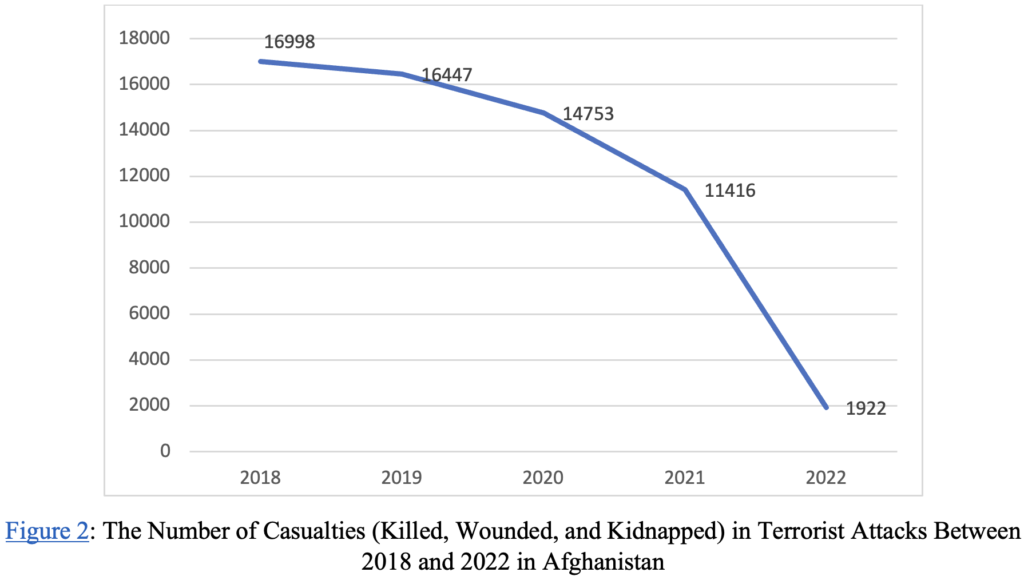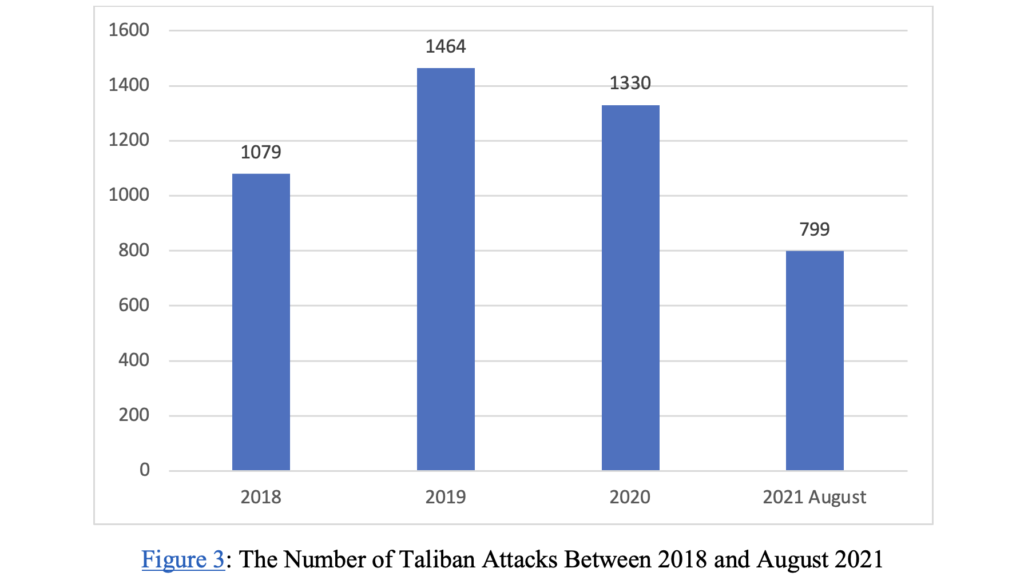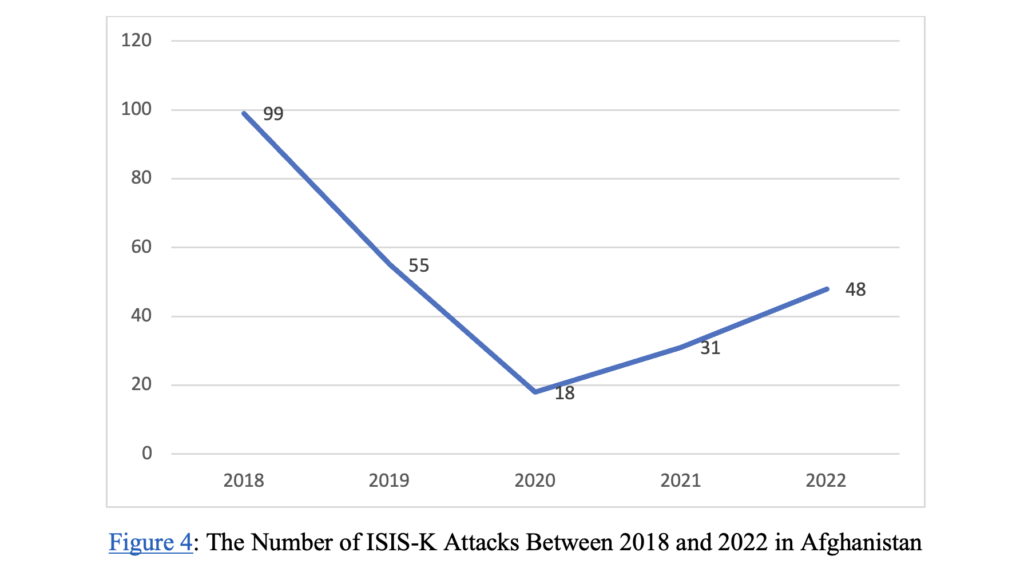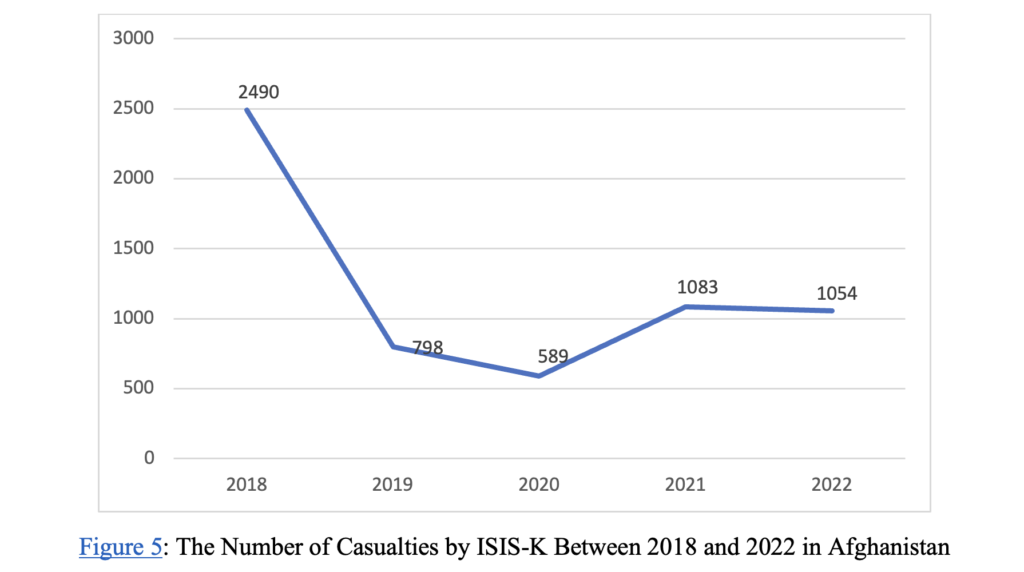The Taliban, a predominantly Pashtun and Islamic fundamentalist group, took over Afghanistan from the United States-backed Ashraf Ghani government in August 2021 after its 20-year insurgency. The fact that the U.S. withdrew its remaining troops from Afghanistan, as specified in the 2020 peace agreement with the Taliban, generated a favorable environment and brought a victory for the group. Since then, the Taliban has sat in the government but is far from acting as a functional government that satisfies Afghans. Its government has grappled with many political, economic, and social issues. Despite its promises to distance itself from terrorist organizations, al-Qaeda and ISIS-K enjoy operating in the security vacuums of the government. This article examines the Taliban’s two years of rule at the government’s second anniversary and focuses on the current capacity of al-Qaeda and ISIS-K.
Basic Services and Human Rights
The Taliban transitioned from an insurgent group to a functional government after its takeover. However, the group has continued to threaten civil and political rights and has taken actions reminiscent of its violent rule in the 1990s. Today, the Taliban government constantly intimidates journalists and violates press freedoms, closing so far more than 200 news organizations. Afghanistan has lost 40 percent of its media outlets and has purged 60 percent of its journalists, especially women. Afghans are not allowed to do demonstrations, and protesters and activists have been forcibly disappeared. The government reestablished the Ministry for the Propagation of Virtue and Prevention of Vice and assigned judges that have enforced their interpretation of Sharia, resuming public floggings and executions.
Women under the Taliban regime have still been persecuted. The government has banned most girls from attending secondary school and all women from attending and teaching at universities. The Taliban has demolished the support system for women and girls who flee domestic violence. Women who seek their rights and protest against the restrictions have been harassed, arrested, or forcibly disappeared.
Economy
The Afghan economy has continued to deteriorate under the Taliban’s leadership. Failing to get its frozen assets of $2.1 billion, the government has wiped out the standard living of Afghans. According to UNDP, almost all Afghans live in poverty. Since the takeover, more than 700,000 people have lost their jobs, and the country’s economy has shrunk by 30 percent. The World Food Programme (WFP) estimates that 92 percent of the population experiences some level of food insecurity, and almost three million children are at risk of acute malnutrition.
Regional Politics
Iran and Pakistan are two countries that supported the Taliban in its insurgency. Iran was consistent with its support to the Taliban because they were against the U.S. forces. The Iranian regime has used every opportunity to support insurgent groups or terrorist organizations when they target the U.S. However, the regime received harsh criticism for its support to the Taliban because the Hazaras, the Shia community in Afghanistan, would not be secure under the Taliban’s government. Indeed, the Taliban lacked security for the Hazaras when ISIS-K targeted them. Hundreds of Afghan Shias lost their lives in ISIS-K attacks targeting Shia mosques.
Iran’s current relationship with Afghanistan has been chaotic since the Taliban’s takeover in 2021. Iranian and Taliban border guards have targeted each other due to the long-term dispute over the Helmand River’s shared transboundary waters. Also, knowing what it means to use the allegations of ISIS in Afghanistan for the Western world, the Iranian government has accused the Taliban of opening its soil to ISIS leadership. However, security experts do not see it as a reliable claim because of tense relations between the Taliban and ISIS.
Pakistan also supported the Taliban due to its ideological interests. Concerned about separatist movements in Balochistan and Khyber Pakhtunkhwa, which have large Pashtun populations, the Pakistani government aimed to use Islamic nationalism. Moreover, the Pakistani government worried about the border with Afghanistan and believed that the Taliban’s rule could ease their concerns. Third, Ashraf Gani’s government had close relations with India, which Pakistan saw as threatening. Like Iran, Pakistan today has faced unintended consequences of its support to the Taliban. The Tehrik-e-Taliban Pakistan (TTP) group, based in Khyber Pakhtunkhwa, has threatened regional security. The first six months of 2023, compared with the same period in 2022, recorded a 79 percent increase in the number of terrorist attacks in Pakistan, and most attacks were perpetrated by the TTP, which allegedly has been provided logistics and support by the Taliban government.
Terrorism: Taliban, al-Qaeda and ISIS-K
The most critical question from the first day of the Taliban’s takeover has been whether Afghanistan could again become a safe haven for terrorists and pose a threat to regional and international security. Since the takeover, a significantly decreasing number of people have lost their lives in terrorist attacks. Before the takeover, the Taliban killed thousands of Afghans to achieve its goals, making Afghanistan one of the countries with the most terrorist incidents. The number of terrorist attacks was the highest in 2019 and 2020, with 1,767 and 1,715 attacks, respectively, as seen in Figure 1. In 2022, there were 188 violent attacks perpetrated mainly by anti-Taliban groups, TTP, and ISIS-K.

The Taliban brutality recorded the highest number of casualties – including fatalities, wounded, and hostages – which accounted for around 22 percent of casualties across the globe. Before the takeover, about 15,000 people were injured and killed in terrorist attacks, as seen in Figure 2 below. The number of casualties sharply decreased after the takeover, and it was 1,922 in 2022.

Figure 3 below shows the number of terrorist attacks by the Taliban. The organization’s violence yielded results for the group that could take over the country. Taliban’s attacks accounted for over 80 percent of terrorist attacks in Afghanistan before the takeover. The group conducted 1,464 attacks in 2019 and 1,330 attacks in 2020.

Despite decreasing terrorist attacks and casualties, al-Qaeda’s increasing influence in Afghanistan threatens regional and global security. The United Nations report has underlined how the Taliban and al-Qaeda remain close and how al-Qaeda has advanced freedom of action. Al-Qaeda sees Afghanistan as a friendly environment to recruit, train, and fundraise. Indeed, a U.S. military operation killed previous al-Qaeda leader, Ayman al-Zawahiri, where he was hiding in a Taliban aide’s home. Al-Qaeda leaders are believed to be based in Afghanistan and have a government-level representation. Sirajuddin Haqqani, the acting leader of Haqqani Network, an al-Qaeda-affiliated organization, still sits as the Minister of Interior. Al-Qaeda in the Indian Subcontinent (AQIS), an active al-Qaeda branch in the region, is well-settled in the country. The Taliban constantly provides monthly welfare payments to al-Qaeda members.
After the takeover, ISIS-K has garnered attention due to its deadly attacks. Seeing the Taliban as a heretic organization due to its collaboration with the U.S. during the negotiations and an irreconcilable threat that must be militarily defeated, the organization has targeted Taliban members and, more specifically, the Afghan Shias. Furthermore, the post-Taliban takeover period recorded ISIS-K attacks in neighboring countries such as Tajikistan and Uzbekistan. Its limited attacks in Kabul and Nangarhar before the takeover have spread to almost all 34 provinces in Afghanistan. Figure 4 below demonstrates the number of terrorist attacks by ISIS-K from 2018 to 2022. The group lost power and capacity until the takeover but gained momentum in late 2021 and 2022.

According to Figure 5 below, the casualty rate in ISIS-K incidents was on par with its attacks over the years. The group killed over 1,000 Afghans in 2021 and 2022, making the organization one of the deadliest organizations because the casualty rate – a number that divides the number of attacks to the number of casualties – is 22 in 2022, which was 5 in the total number of attacks worldwide in the same year.

To conclude, it is predictable that the Taliban’s Afghanistan has poor indicators in every developmental criterion. Its economy has faced a catastrophe. Women are still oppressed. The country is still polarized, and ethnic resistance in northern provinces feebly targets the Taliban forces. Its government is not functional to address the basic needs of Afghans. It is unsurprising to see how al-Qaeda benefits from existing opportunities to influence the government and use Afghan territory as a safe haven. ISIS-K operates in the security vacuums where the Taliban lacks providing security in the country’s 34 provinces. The first two years of the Taliban in the government have deteriorated the situation in Afghanistan. It seems that the coming anniversaries will report similar issues since the Taliban cannot be a decent ruler in such a war-ridden country.






